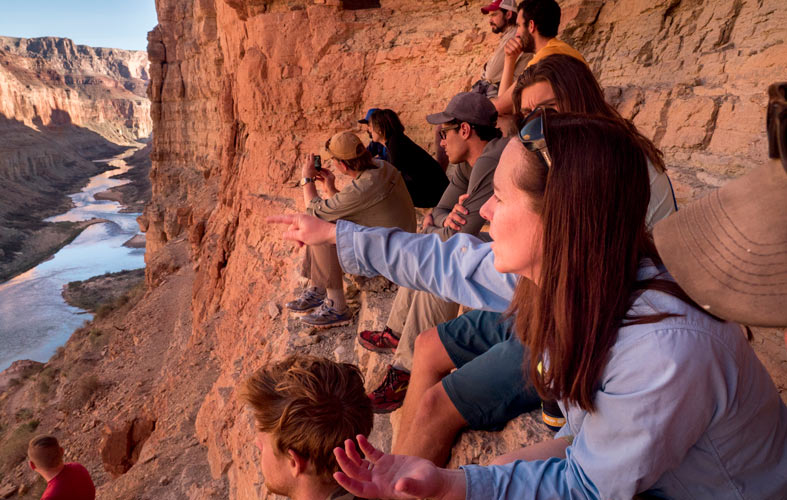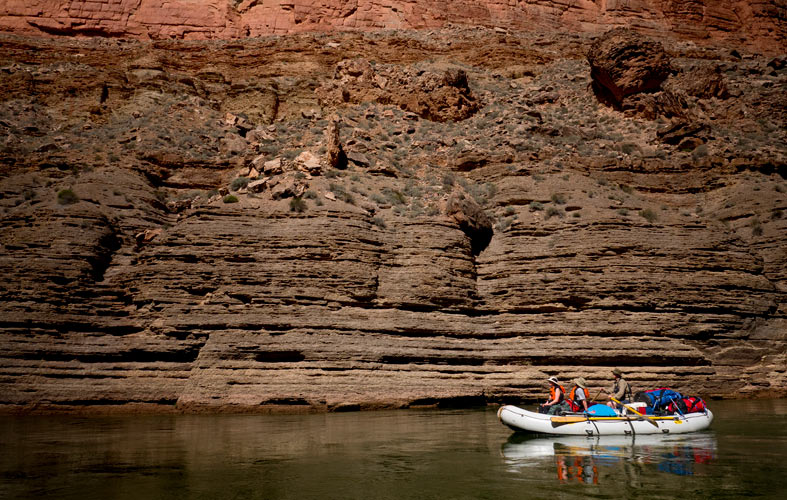Ancient Grains
There are some places in the world that are so mesmerizing you hardly know what to say.
I once sat at sunrise at Machu Picchu about an hour before the tourists flooded through. It was calm, beautiful, timeless. I felt something similar while perched above the Colorado River at the Nankoweap Granaries.
Puebloan ‘storage units’
The Nankoweap Granaries look like a row of square windows, which were cut into the sandstone around A.D. 1100. We get to these archaeological ruins by hiking a well-trodden, mostly vertical trail about a half mile from the beach.
Our little hike is nothing compared to the trek the original travelers to this site had to take. Nearly 1,000 years ago, ancestral Puebloans hauled their grain, including pumpkin seeds and corn, from the river delta below to these “storage units.” The granary helped keep the food dry during floods and protected it against rodents and other hungry creatures.
The ruins are fragile and, as in a museum, visitors are not allowed to touch them. But the students sit on a series of stone ledges directly beneath them, taking in one of the best views we’ve seen yet of the meandering river below.








